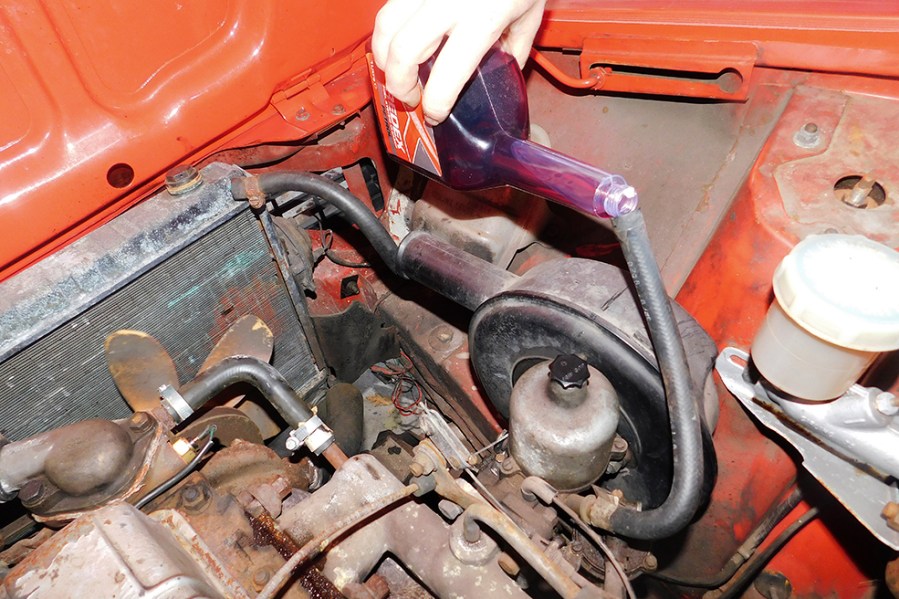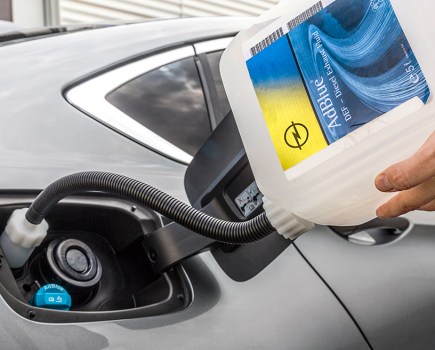In today’s cost-conscious times, supplementary engine and fuel additives promise means of cutting motoring costs. We study whether or not they really deliver
Words: Rob Marshall
Since the motorcar was invented, aftermarket companies have offered all sorts of potions, pledging to increase reliability and/or reduce running costs. Some of them delivered on their promises; others fell notably short. Yet, it would be unfair to judge additives used by our forebears as totally useless. Some of them were necessary, so much so that separate dispensers at petrol forecourts used to be popular. These upper cylinder lubricants reached the areas that oil alone could not and helped discourage carbon build. Refinements in engine design particularly rendered such additives redundant – or have they? The fact that additives have not just disappeared but have become more prolific indicates that their relevance has grown, rather than diminished.
While modern power units are more fuel efficient, more powerful and cleaner than their ancestors, these advantages come at a cost. Reduced internal tolerances make them less tolerant to contaminations, which build as the vehicle ages. Furthermore, cars have become considerably more complicated, particularly with the proliferation of exhaust emission after-treatment systems. For these reasons, inhibiting and removing contamination build is the main aim of automotive additives.
One would expect manufacturers to endorse additives openly; but they do not. An explanation may be purely brand protection. As regular readers appreciate, taking carmakers’ advice is not always in our best interests, especially where maintenance intervals are concerned. Experienced DIYers are, quite justifiably, suspicious of the official recommended engine oil change rates that tend to be too long, especially for sealed-for-life lubricants that are used in transmissions. Of course, CM readers’ definitions of what constitutes ‘life’ is likely to be more ambitious than that of car manufacturers, one of which revealed to us that it was seven years – a figure that is well below the current average car age in the UK.
Of course, additive manufacturers are vying for your hard-earned cash, which would make some readers suspicious of them. We should also consider that additives do not have to fulfil any formal technical specifications – unlike manufacturer-approved lubricants, for instance. While this fact might explain car manufacturers’ caution, it also means that you should buy with care.

Older car relied on upper cylinder lubricants for optimum engine life. Regular use of fuel system cleaners helped to remove residues left behind by evaporated petrol.
Pour-in fuel additives
The most consumer-friendly types are those that are poured into the tank. Many additive companies report that these products are their best sellers and demand has risen in recent years. This has not been down to clever marketing alone but valid technical reasons. Changes to petrol and diesel formulations have made them more prone to leaving post-combustion deposits behind. These alterations have been made not just for environmental reasons, such as reducing the emissions of Volatile Organic Compounds and increasing the bio-fuel content, but also to ensure as much fuel is cracked as possible from each barrel of crude oil. Further complications with these blends include lower lubricity and a greater tendency to absorb moisture.
Therefore, fuel system cleaner additives are formulated to perform many functions and a huge variety of products are available at varying price points. Some types optimise the fuel, by enhancing its lubrication qualities and increasing the octane (petrol), or cetane (diesel) ratings. Others focus more on reducing oxidation/ageing rates, ie. the speed at which the fuel reacts with the air and deteriorates. All these benefits should result in cleaner combustion. Additives can perform these tasks only to the fuel to which they are added. However, products that focus on cleaning should also soften existing carbon deposits and, in the case of diesel especially, help to kill microbe growth that can clog fuel lines.
Products advertised as fuel injector cleaners focus more on cleaning these delicate parts, thus avoiding the need for relatively expensive and inconvenient removal and specialist ultrasonic cleaning. Yet, even this additive class is fragmenting. As gasoline direct injection (GDI) offers lower fuel consumption and CO2 emissions, compared to the earlier port/indirect petrol injection designs, where the injector was placed within the inlet manifold behind the valves, it has created other issues.
As these fuel injectors are relocated within the combustion chamber, they are exposed to not only the heat but also the by-products of the combustion process, causing contaminations to become baked to the injector tip. This restricts the injectors’ fine nozzles, each of which possesses a smaller diameter than human hair, which alters the delicate spray pattern. Thankfully, sophisticated engine management will compensate for this injector fouling, by adjusting the fuel trim automatically but only to an extent. Once the long-term fuel trim deviates beyond a typical 25% from its standard setting, the engine malfunction indicator lamp is likely to illuminate – an instant MOT failure issue on most modern cars.
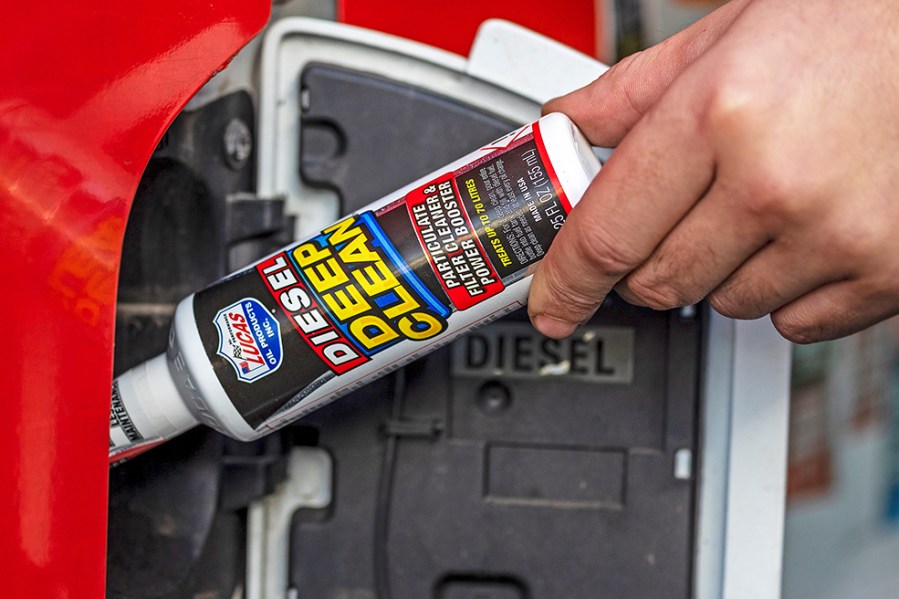
Modern engines bring new problems and quality additive manufacturers are rising to the challenges.
JLM Lubricants reports that additive technologies and means of testing them must keep up with engine development. When the company tested its GDI-specific injector cleaner at the Millbrook Proving Ground in Bedfordshire, it found that fuel consumption was reduced by 4% and deposit levels within the intake manifold and behind the inlet valves did not increase.
While detergents are vital to clean varnishes and gums from pistons and injectors, one has to consider that some of these fuel additives end up in the engine oil, because a small quantity of exhaust gases bypass the piston rings. BG Products reports that, if the product used contains unstable cleansing chemicals, they can reduce engine oil life and increase the risk of sludge build. Interestingly, the Worldwide Fuel Charter warns against cheap fuel additives specifically, because they can leave extra deposits behind. Therefore, when looking at fuel additives that perform cleaning functions, check for ingredients that are effective against promoting additional deposits, such as PEA (polyether amine).
Some fuel additives are more bespoke. For classic cars, the advantages of fuel additives that combat valve seat recession are a priority for cars with iron cylinder-heads, especially. While the absence of lead in today’s petrol blends is not an issue for modern vehicles, last year’s increase in ethanol levels in petrol (up to 10% for 95RON) creates several complications. While corrosion is not so much of a problem for most post-2010 cars, E10 fuel oxidises relatively quickly and a car running on fuel that has ‘gone off’ will not run at its optimum and the fuel will promote extra deposit build. Supplementary additives are designed to counteract the downsides of ethanol-laced petrol and help the fuel to last longer. They are ideal for low-mileage users, or those using plug-in hybrids mainly in electric-only mode. LIQUI MOLY, for instance, reports that its Fuel Protect additive is useful to combat the water-absorption qualities of modern ethanol-laced petrol, because it binds the water in the petrol, in addition to its corrosion protection benefits.
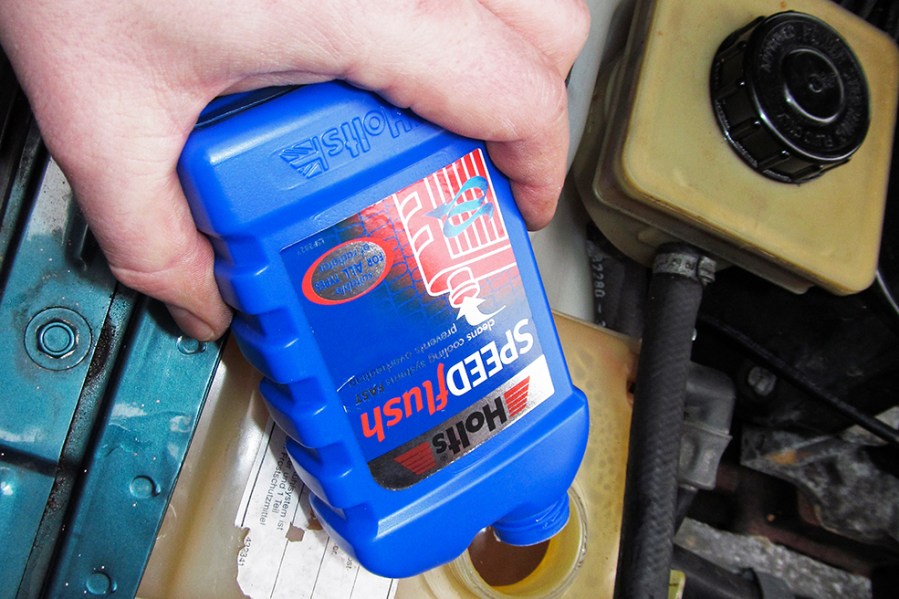
Like those used in engine oil, flushes are beneficial for the cooling system too, helping remove scale and boost efficiency.
Fuel additives for MoT preparation
While using additives to clean fuel injectors and keep fuel fresh for as long as possible will help to suppress exhaust emissions, you may look to additives as a relatively inexpensive means of bringing a borderline MOT emissions failure back from the brink. Should the tester think that a petrol engine’s catalytic converter is not working as it should, consider that its honeycomb-like monolith structure could be saturated with carbon, so its previous metal catalysts cannot react with the exhaust gases. Some additives, such as that promoted by Cataclean, are dosed into the fuel, pass through the engine and the resultant post-combustion vapours eradicate the contamination build, restoring the converter’s efficiency levels.
The range of fuel additives for diesel particulate filters (DPF), however, is more complex. For the uninitiated, these units are soot traps, built within the exhaust system, that capture and vaporise carbon particulates under high temperatures, preventing them from being expelled into the atmosphere, using a process called ‘regeneration’. Unfortunately, DPFs can become overwhelmed with soot, caused mainly by low speeds, short distances, or a fault, such as a split turbocharger hose. Yet, should a DPF-related fascia lamp appear, consider whether there is a fault at all. Many cars display a dashboard light (or message) that warns of a potential problem, which can be resolved by driving the car at a consistent higher speed, until the lamp extinguishes. This gives the DPF sufficient time and temperatures to complete the automatic regeneration process. This advice should not be ignored.
Some technically-minded owners reckon that a DPF blockage can be solved with brief full-throttle applications and high engine speeds. Alternatively, some experienced DIYers (and garages) resort to ‘forced generations’, where a DPF cleaning programme is enacted diagnostically with the car stationary. Based in Ashington, Northumberland, the DPF Doctor network head, Darren Darling, reports that these techniques invite further mechanical damage; far preferable are mechanically-sympathetic, gentler methods.
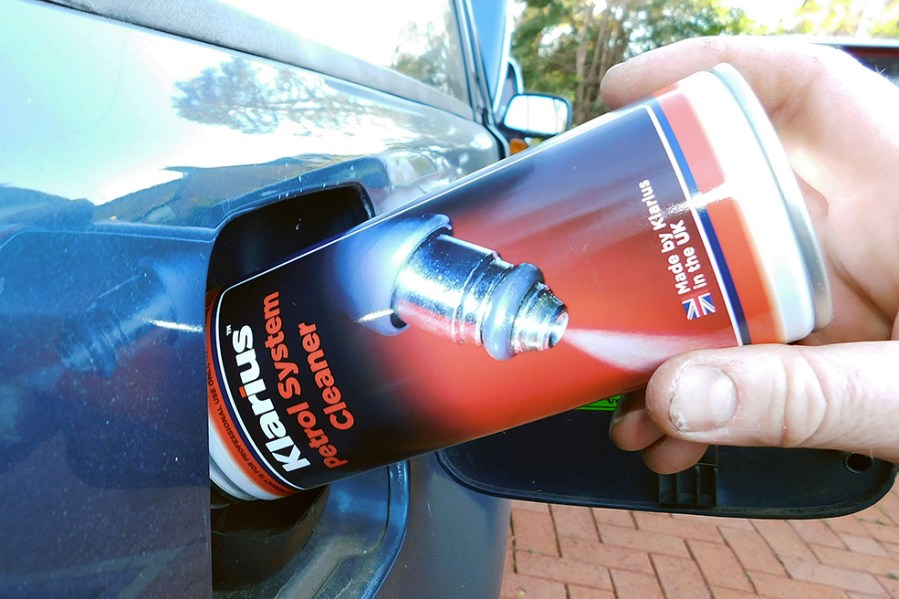
Fuel additives that focus on contamination removal are useful for relatively infrequent use, such as at every service or if erratic running is noticed. More concentrated additives may be considered in the event of a fault, but use them with care.
Additives have a vital role to play in this kinder approach. The most widespread types of DPF fuel additive are regeneration aids. JLM Lubricants reports that additive formulations must evolve, as chemical technology advances. While its ‘Regen Plus’ additive reduces the temperature at which the soot within the DPF burns, the company has reformulated it, by replacing its iron ingredient with cerium. Aside from being more effective, the main advantages include making DPF damage less likely, should it be overdosed slightly.
When poured into the diesel tank, the active additive constituents survive the combustion process, enter the DPF and permit the soot to vapourise at a lower temperature. Yet, Mr Darling reports that these products can cause more harm than good, if used incorrectly. Presuming that more additive means a faster and superior result, some car owners do not follow the instructions and over-dose the fuel tank deliberately. While the soot is burnt, the DPF internals overheat and collapse. Last August, for instance, the DPF Doctor network reported over 200 DPF blockages, caused not by soot but disintegrated internals. In severe cases, the DPF outer casing can melt, causing red hot particles to drop onto the ground, creating a fire risk.
Therefore, when considering a fuel additive to facilitate DPF regeneration, determine what you are trying to achieve and read the instructions carefully. To work properly, the procedure may not be as straightforward as adding a bottle of additive to a tank of diesel and driving off.
Should the DPF become overloaded with soot, it may be too late to use a regeneration additive, because of the overheating risk. Professional on-car cleaning methods may involve injecting different additives into the DPF directly, via the hollow pressure differential tubes, which soften and dissolve carbon within the DPF. Yet, even garages must monitor DPF temperatures during this operation. Powerflow Ltd, for instance, which distributes the North American BG Products range of additives to the UK, reports that it supplies professional DPF cleaning machines only to technicians that employ DPF temperature monitoring equipment throughout the cleaning procedure. Therefore, when taking your car to a garage with a DPF blockage, provide the technician with as many truthful details as possible, including any DPF additives that you have dosed into the tank, from where you fill with fuel, your driving patterns and when the vehicle was serviced last.
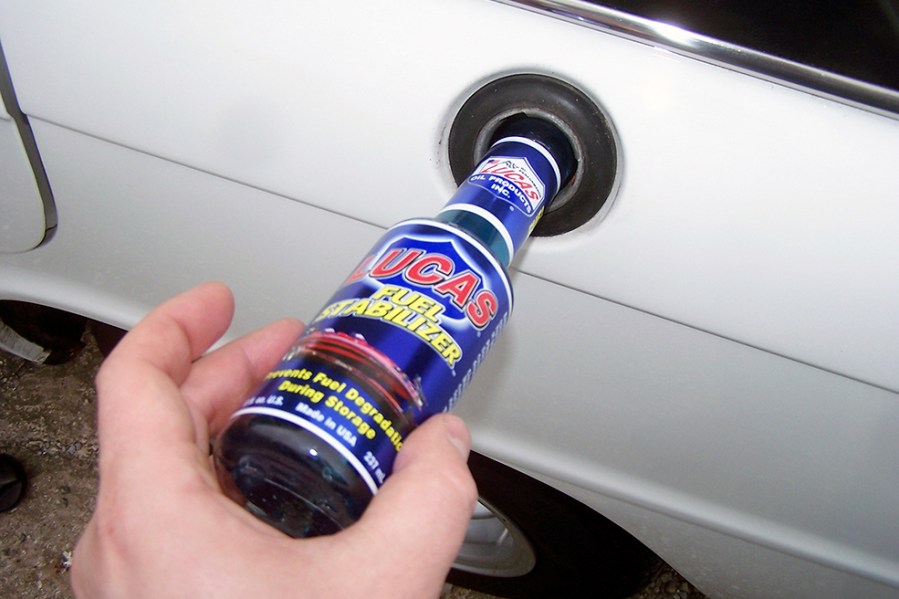
Should the fuel tank not be replenished at least every two weeks, consider using an additive that extends fuel life. These include fuel system driers and those that assist with biofuel degradation.
On-board fuel additives
Aside from some LPG converted cars being fitted with an automatic dosing system that dispenses a valve-seat protector additive, the most common automated fuel additive system is equipped to certain diesels, to reduce the temperatures at which soot particulates burn within the DPF. This not only makes the system less prone to blocking but it gives manufacturers freedom to mount the DPF further away from the hot engine.
The system comprises a separate tank that tends to be situated adjacent to the diesel tank beneath the car (pictured). Alternatively, a replaceable pouch may be used instead. These contain a fuel additive (the trade name of which is ‘Eolys’) that is dispensed into the fuel tank, soon after the diesel is topped-up. The quantity is assessed by a separate additive ECU that relies on inputs from the fuel level and fuel cap presence sensors. Just like the DPF regeneration additives mentioned within this feature already, Eolys works by surviving the combustion process and coating the resultant soot with a coating that burns at a lower temperature. When these enveloped particulates enter the DPF, the coating burns first and the resultant temperature rise vapourises the soot.
The system is surprisingly reliable but most issues occur when the additive needs replenishing. While the driver is warned by a dashboard message about the additive level running low, consider that most (if not all) systems especially do not possess an additive level sensor. Instead, the quantity of additive dispensed is measured and these counters require resetting diagnostically after the tank is replenished. Where fitted, additive pouches can be bought and refitted fairly easily but filling the tank is more involved.
While not refilling the additive tank, or doing so with diesel, is certain to promote a future DPF soot blockage, we have been made aware of ‘fake’ aftermarket additives being offered to both the public and the motor trade.
CDTi (the maker of PatFluid, an aftermarket alternative to Eolys branded additives) has become aware of such products being offered at very low prices. To find out more, the company submitted them to an external laboratory to evaluate how much active material they contain that permits them to work. Compared to the Original Equipment additives and PatFluid, the results showed that some of them contained less than half of the active material. Worryingly, many of them contained fewer than 90% of these essential ingredients. CDTi told CM that these low levels mean that they are unlikely to work effectively at all.
Engine oil additives
Perhaps the most popular additive that DIYers consider is engine oil flush. This is dosed into the engine oil, just before draining the sump, to dissolve any accumulated contaminations and hold them in suspension, so they flow out after the sump plug is unscrewed. Some car owners worry that a flush will dislodge larger deposits and cause blockages. They have a point. Though, this situation tends to be caused by solvent-based flush products that dominate the UK market. Therefore, seek out a solvent-free flush, which is also more likely not to degrade oil seals.
In addition, check the Safety Data Sheet and ensure that the “Flash Point” ASTM D-93 is at 50°C, or below. This will reassure you that any oil flush product that remains in the sump will evaporate out of the new oil and not contaminate it.
Should you own a GDI car, consider that the low-tension piston rings, which are designed to reduce internal friction, can become gummed with deposits surprisingly early in the car’s life. This reduces compression, leading to inefficient combustion and increased crankcase blow-by, all of which increase contamination build at the top and bottom of the engine. A further issue is the engine oil being tainted with fuel, leading to increased oxidisation and sludging risks. A good quality oil flush helps to remove these deposits and restore the rings’ compliance and sealing qualities.

In the event of severe contamination, consider that physical removal and cleaning may be the only option. This engine sump pan contained several centimetres of congealed sludge.
Oil fortifiers
The Verification of Lubrication Specifications (VLS), the independent British organisation that checks whether, or not, the claims made by lubricants are true, warns that the smallest change in the formulation can have a real impact on the performance of the oil. It highlights to CM readers that, “Aftermarket engine oil additives risk interfering with the lubricant’s ability to cool, clean, protect moving parts and emission control devices, which could result in unnecessary expense to customers”
LIQUI MOLY, however, produces both engine lubricants and additives and it reassures users that: “Our additives are fully compatible with every common engine oil. If applied correctly, our additives cannot negatively affect the chemistry of the engine oil. As there are no standards for additives, it might be that products from competitors interfere with the formulation of the oil but definitely not ours.”
Perhaps unsurprisingly, additive companies insist that their fortifying products enhance the oil’s protective qualities. Yet, perhaps we should consider that oil blenders could formulate superior oil but, to do so, they would have to raise prices. BG Products reasons that several aspects of engine oil performance can be improved beyond current standards and highlights its balanced package of additives that do just that.
We should also consider that oils suffer a premature increase in viscosity and contamination, when exposed to extreme conditions. Such situations include high temperatures, long periods of idling/stop-start driving, and multiple cold runs. In these cases, dosing specific additives into the lubricant, such as anti-oxidants, acid neutralisers, detergents, and anti-wear metal protectors will enhance the oil’s life, hypothetically.
Before buying any oil fortifier, BG Products recommends that it should be evaluated to see whether it benefits the lubricant, or ruins it, because of a reckless addition of disproportionate, or low-quality ingredients. For instance, a hot topic in classic car circles is ZDDP, an anti-wear additive that is not so prolific in modern car engine oils, due to the damage it wreaks on catalytic converters. One might think that adding more ZDDP as possible to oil is ideal, but this stance may be counterproductive, by causing the oil to sludge.
BG Products highlights that its Advanced Formula MOA and Diesel Oil Conditioner additives contain fortifiers that are well-researched, with solid science behind them to prove that they enhance the engine oil’s performance, without upsetting its chemical stability. JLM Lubricants states that its Bortec oil additive raises the stock lubricant’s protective qualities, while neither interfering with the engine lubricant’s basic chemistry, nor clogging the oil filter. However, rather than relying on ingredients used by its competitors, such as molybdenum disulphide, JLM Lubricants has chosen boron nitrate, which can tolerate temperatures three times higher than those more traditional additives, without sacrificing its protective qualities significantly.
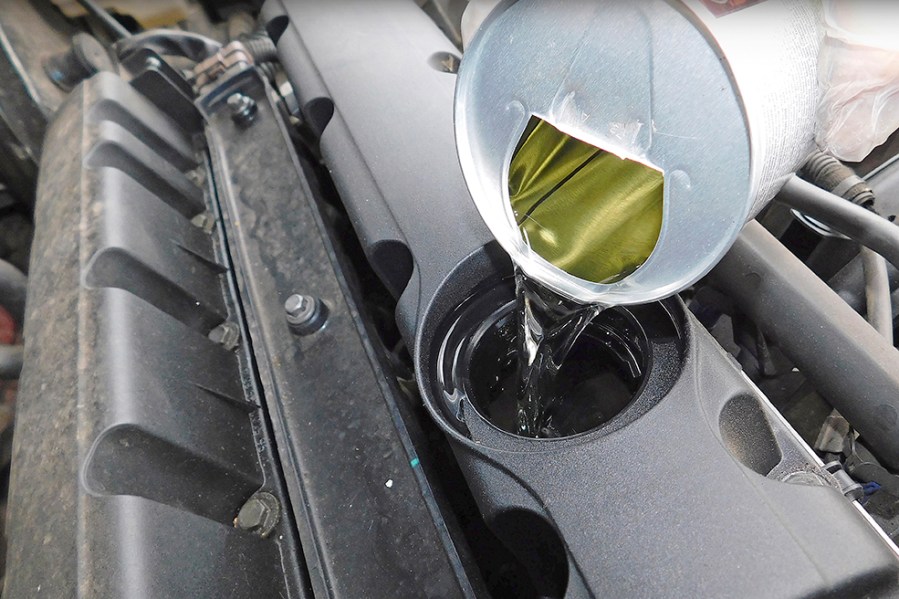
The additive also ‘clings’ to metallic surfaces, permitting extra protection on cold-starts, as the oil pressure builds. This is especially relevant, because most engine wear occurs on start-up. LIQUI MOLY has chosen a slightly different direction with its Cera Tec additive, which utilises ceramic particles. Tests performed for the company at the automotive engine test centre, APL in Germany, showed that engine oil wear protection rates double, when fortified with Cera Tec.
LIQUI MOLY anti-wear additives range starts with physical protection (Oil Additiv), which utilises molybdenum disulphide particles that adhere to the metal surfaces. Should physical protection not be desired, Motor Protect offers a chemical alternative that uses friction modifiers to smooth the metal surfaces. Combining the two technologies is the aforementioned Cera Tec that employs ceramic particles for its solid lubricant instead of molybdenum disulphide.
Naturally, you can select engine oil additives to fulfil a specific purpose. On engines that are prone to emitting a brief mechanical rattling after a cold start, one might wish to consider an additive that will address this oil starvation issue. Many people report positive experiences using Lucas Oil’s Heavy Duty Oil Stabilizer on engines with a tendency for slow oil pressure build but the original formulation is too ‘thick’ for modern engines. Fortunately, the company has responded with a low-viscosity alternative for current models.
Minor oil leaks can be cured with a seal-swell additive, apart from those caused by physical damage, such as a punctured seal. However, this product will act on all rubber components indiscriminately, such as valve stem oil seals. This is one reason, why engine seal-swell additives must never be used in automatic, or dual-clutch automated manual gearboxes, because they will swell all of the hydraulic seals as well.
Several additives exist to help prolong a highly worn engine, many of which thicken the oil to help enhance oil pressure. Such additives should be used with care and with consideration about whether the additive will help to cure the issue(s) experienced, such as excessive crankcase pressures. Whichever engine oil additive you choose, ensure that it will not increase deposits within the catalytic converter, or DPF.

It is not always easy for companies to test products, even independently. To prove that its K-seal could seal holes that could empty a cooling system in around 20 minutes, Kalimex sought to prove compliance with ASTM D-3147. Yet, with no test facilities in the UK, or North America, the company had to engage Brighton University to build a test rig. The result proved K-seal’s compliance.
Do additives work?
Establishing whether additives work depends largely on the result you desire. Your expectations should also be reasonable. An additive that helps rejuvenate the active surfaces of a catalytic converter, for instance, cannot be expected to repair a smashed monolith. Similarly, an Exhaust Gas Recirculation carbon cleaner spray cannot repair an EGR valve with a head that has separated from its stem.
While additives are still subject to basic consumer rights law, their formulations are set by their manufacturers, which consider not just their effectiveness but also user safety and, of course, price.
Independent testing is involved, lengthy, costly and likely to be inconclusive. Therefore, after deciding your aims, research the available products. Those from a well-known brand, supplied by trustworthy outlets, are more likely to meet their claims than spurious alternatives, sourced from unknown sellers’ shops on marketplace websites. Products aimed at garages can be a good quality indicator, because the motor trade will ditch products quickly, if they are found to be ineffective.
Conduct your research carefully and be prepared to ask the additive manufacturer questions. Be suspicious of any company that points solely to its hundreds/thousands of ‘satisfied’ customers on online review sites as justification for its product’s efficacy, instead of independent laboratory evidence.

